From the Powerball to Candy Crush to Farmville, games have permeated our lives. And for good reason: They’re fun, exciting, and rewarding. Plus, leveling up or winning a game provides us with an instant sense of gratification and pride.
So to make your UX more engaging–even addictive–try incorporating gamification elements.
To inspire you (and prove that gamification can be interwoven into any type of site or app), I’ve found six awesome examples of gamified user experiences.
1. A Video Game Portfolio
Designer Robby Leonardi took a very literal approach to gamifying the interface of his personal website: He turned it into a video game.
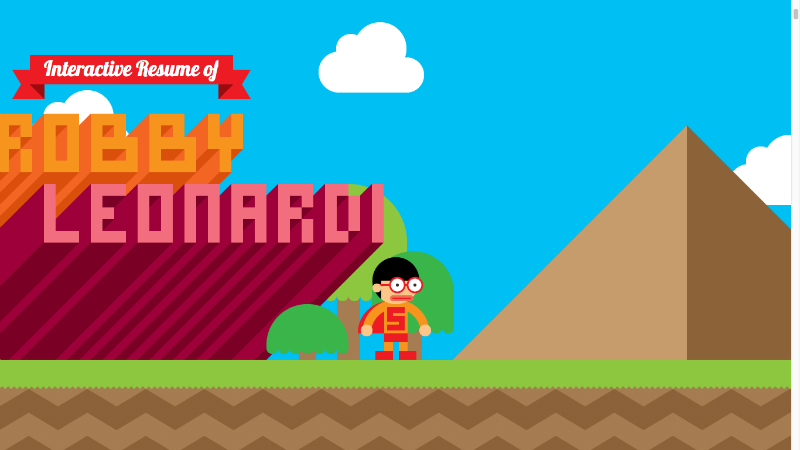
Upon entering the site, you’re greeted with a welcome banner. A video game character (clearly meant to represent Leonardi) is standing underneath, and it doesn’t take more than a couple swipes of your mouse to discover that you’re animating him.
As you move through the levels of the video game–jumping, flying, and hopping into air balloons along the way–you see cartoon elements describing Leonardi’s impressive career history.
The “journey” ends on an email form. By this point, you’re so impressed and delighted that it would be hard not to hire him.
Although Leonardi’s portfolio is so fantastic partly because it’s one-of-a-kind, you can still derive inspiration from it. Consider adding visual game elements to your UI to make it more novel and awake your user’s inner child.
2. A Data Visualization Dashboard
Daytum is an elegant website that allows you to turn personal stats into charts, graphs, and tallies.
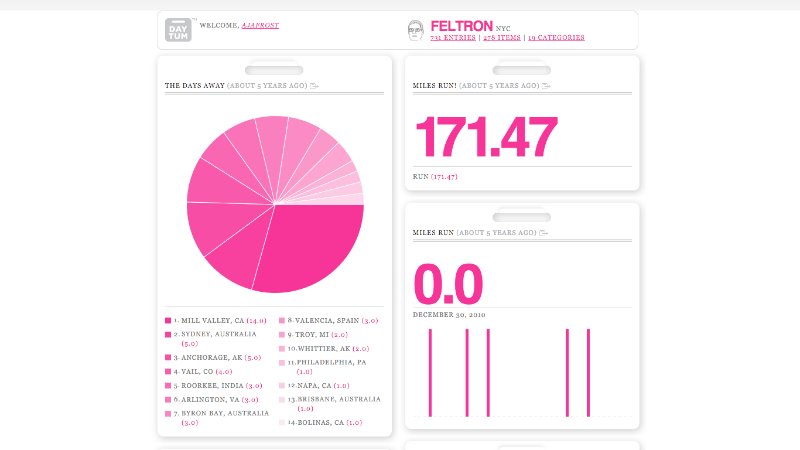
For example, one user created a pie chart displaying which songs he replayed with the greatest frequency. Another is recording how many days he works each year (his records go back to 2012).
The gamification element is subtle, but the concept of racking up points and tracking progress is definitely a gamified one.
This is a great example of how you can use gamification without forcing your users to compete. Since there are no templates or limiting rules, everyone on Daytum creates their own dashboards and themes–and for that reason, you can’t compare your results or updates with anyone else.
3. Motivational Apps
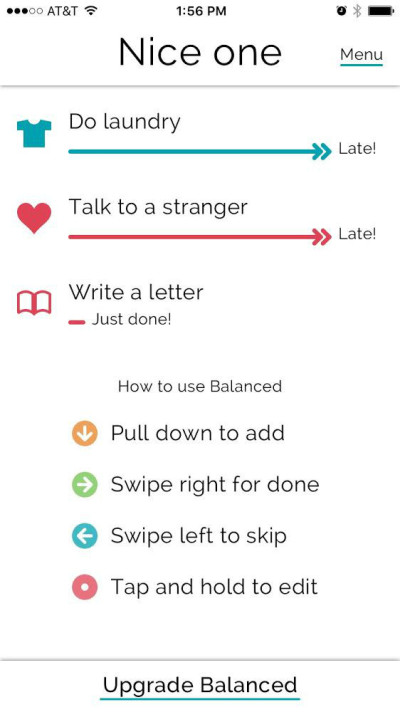
Many apps meant to help you live a better life incorporate gamification elements, but Balanced is a particularly good example.
Every time you finish a task, you swipe right to mark it as “Done.” A “just done” tag will then pop up beneath the task, and “Nice One” will flash onto your screen. Independently, these responses may be underwhelming, but in conjunction, they’re a 1-2-3 hit of positive feedback. Also, the “Done” bar is green, which is significant because green is associated with feelings of balance, energy, and health.
Todoist, a task management app, also makes good use of gamification principles.
It uses a points-based system to encourage you to be productive. When you cross off items on your to-do list, use Todoist’s advanced features, and reach self-assigned productivity goals, you receive Karma points. When you let tasks become two-plus days overdue, you lose Karma.
You might be wondering, “What can you buy with your Karma?” The genius is: Nothing. Todoist’s creators understand that accumulating points is, in and of itself, rewarding. There’s no need to offer a higher incentive.
I’d also like to point out that receiving points relies on using the app more frequently and exploring its functionalities. The best gamification elements will subtly promote loyalty and dependence in your users.
4. A Navigation Tool
In 2013, Google paid more than $1 billion for Waze–and the investment paid off, because three years later, it’s got 50 million active users.
Gamification is a huge component of Waze’s success.
If you’ve never used it, Waze provides both traditional directions and road “tips” from other drivers. For example, if you’ve got Waze open while you drive down the freeway, it might notify you “Police in 1 mile” or “Accident in 3 miles.”
Waze motivates its users to both use its app and supply information through an intricate points, rank, and badges system.
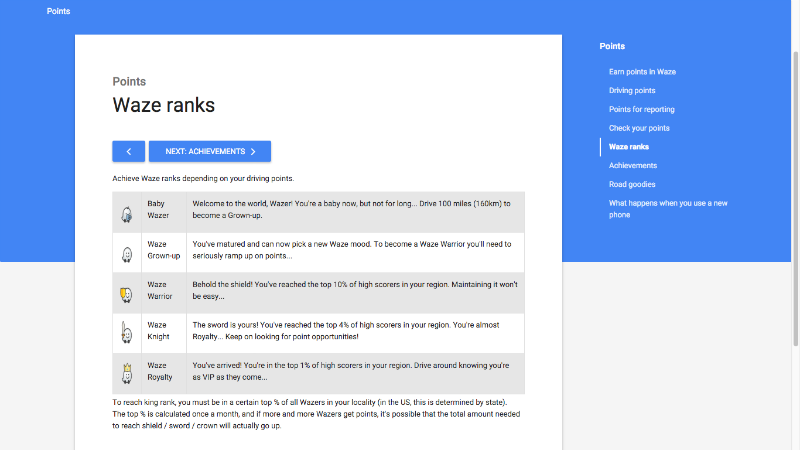
Every time you report a road condition or gas prices, you get six to eight points. And this is truly genius–Waze gives you points for every mile you drive with app running, incentivizing people to use it even when they already know where they’re going.
You can even get video-game-esque “road goodies,” or randomly placed loot worth a varying number of points.
Rank is determined by the number of points you have compared to the people in your region.
Apart from the satisfaction of becoming a “Waze Warrior” or “Waze Knight,” the points don’t have any application. The fact that both Todoist and Waze use an ultimately arbitrary points system shows that you can incorporate scores and hierarchies into your product without needing a real-world reward.
5. A Career Networking Platform
Say what you will about LinkedIn’s clunky UX, but the integration of gamification elements is nicely done. The site encourages you to fill out as many fields of your profile as possible by quantifying your profile strength.
It’s actually impossible to reach “100%,” which is a diabolically clever way to get users to endlessly tinker with their profiles.
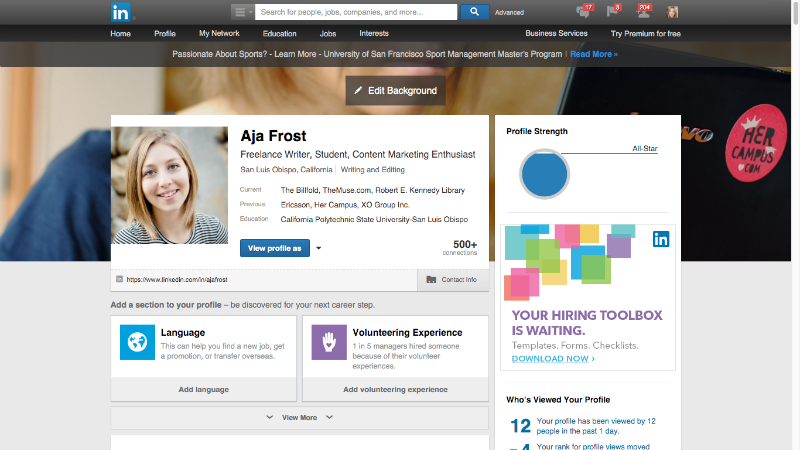
LinkedIn also shows you how many page views you’ve gotten in the last 90 days, how that compares to your historical views, how many “actions” you’ve taken, and how you rank compared to the other people at your company, in your network, and in your field.
By showing you these metrics, LinkedIn pits you against two entities: your professional “competition,” and yourself.
Not only do you want to rank more highly than your peers, but you also want to beat your former numbers. This aspect of the site can make LinkedIn just as addicting as, say, Facebook or Instagram.
Even if it doesn’t make sense to incorporate user competition within your product, you can almost always find a way to incorporate self-competition.
6. A Blogging Community
There are tons of blogging sites out there; Medium has always primarily differentiated itself by its clean, monochromatic aesthetic.
However, look closely, and you’ll realize Medium is also unique in the way that gamification principles have been woven into its fabric.
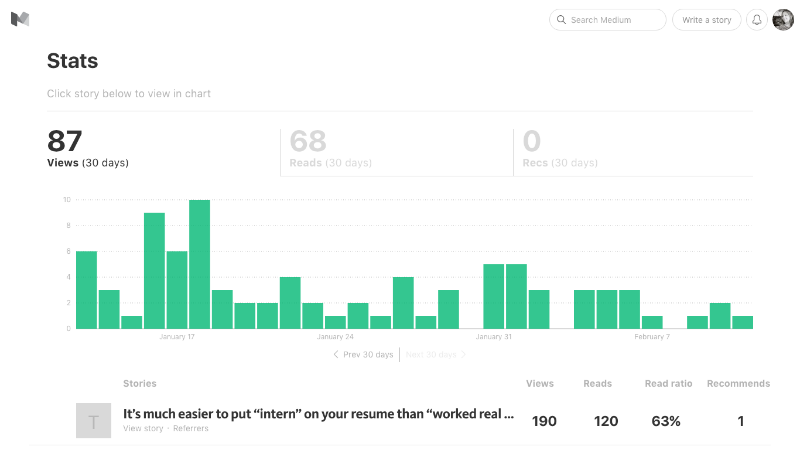
There’s the now-traditional ratio of followers to those you’re following, which is the Internet’s lingua franca of status. In addition, each user receives detailed analytics on his or her posts. Not only can you see how many total views, reads, and “recommends” you’ve gotten in the last month, you can also see views, reads, and recs for individual stories.
Medium even helpfully breaks down the percentage for you: X percent of the people who clicked on the story kept scrolling.
These metrics are an effective way to drum up enthusiasm for content production–but the site’s creators have also found a way to gamify content digestion.
Every comment on a story can receive “hearts” of approval; if your comment gets the most hearts, it’s shown first. Since only a limited number of comments are displayed, there’s a clear incentive to leave the most popular note. Responses to responses can also be hearted. Furthermore, readers can publicly highlight the snippets of the story they really like. If the same snippet is highlighted multiple times, it turns a special color and the honor of “Top Highlight.”
If you’re interested in reading more about gamification, I recommend the following articles:
- Increase Engagement with Merit and Gamification
- Building Engaging Web Apps with Game Mechanics
- Why Gamification Is Broken (and How to Fix It)
Frequently Asked Questions on Gamification in Design
What is the Role of Gamification in UX Design?
Gamification in UX design plays a crucial role in enhancing user engagement and interaction. It involves the application of game design elements in non-game contexts to make the user experience more enjoyable and engaging. This can include elements like points, badges, leaderboards, and challenges. Gamification can help to increase user engagement, motivate action, promote learning, and create a sense of competition and achievement.
How Can I Implement Gamification in My Design?
Implementing gamification in your design involves understanding your user’s needs and motivations. Start by defining your objectives, then identify the behaviors you want to encourage. Choose game mechanics that will motivate these behaviors, such as rewards for completing tasks or points for engagement. Finally, test your design and adjust based on user feedback.
What are Some Successful Examples of Gamification in Design?
There are numerous successful examples of gamification in design. For instance, Duolingo uses gamification to make language learning more engaging, with points, levels, and rewards. Nike+ Run Club uses gamification to motivate users to exercise more, with challenges, badges, and social sharing. These examples show how gamification can enhance user engagement and motivation.
What are the Benefits of Gamification in Design?
Gamification in design offers several benefits. It can increase user engagement and motivation, encourage user interaction, and create a more enjoyable user experience. It can also help to promote learning, drive user behavior, and increase user retention.
What are the Challenges of Implementing Gamification in Design?
Implementing gamification in design can present several challenges. It requires a deep understanding of your users and their motivations. It also requires careful design to ensure that the game elements are integrated seamlessly and do not detract from the overall user experience. Additionally, it requires ongoing testing and adjustment to ensure that the gamification elements are effective.
How Can I Measure the Success of Gamification in My Design?
The success of gamification in your design can be measured in several ways. You can track user engagement, such as the number of active users, the time spent on your site or app, and the level of interaction with the gamification elements. You can also measure the impact on user behavior, such as increased task completion or improved learning outcomes.
Can Gamification be Applied to Any Type of Design?
While gamification can be applied to many types of design, it is not suitable for every situation. It is most effective when used to enhance user engagement and motivation in contexts where these are important, such as learning platforms, fitness apps, or customer loyalty programs.
What are Some Common Mistakes to Avoid When Implementing Gamification?
Some common mistakes to avoid when implementing gamification include overcomplicating the game mechanics, not aligning the game elements with the user’s motivations, and not testing and adjusting the design based on user feedback.
How Can I Keep Users Engaged with Gamification Over Time?
Keeping users engaged with gamification over time requires ongoing innovation and adjustment. This can include introducing new challenges or rewards, adjusting the game mechanics based on user feedback, and ensuring that the gamification elements continue to align with the user’s motivations and needs.
What is the Future of Gamification in Design?
The future of gamification in design is likely to involve more sophisticated and personalized game mechanics, driven by advances in technology and a deeper understanding of user behavior. This could include more immersive game experiences, the use of artificial intelligence to personalize the game elements, and the integration of gamification with other emerging technologies like virtual and augmented reality.
Aja Frost is a writer, tech/design geek, and podcast addict. Check out her site or say hi on Twitter.
